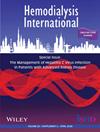Metformin-associated lactic acidosis (MALA): Is it an underestimated entity? A retrospective, single-center case series
Abstract
Introduction
Metformin is widely considered a first-line antiglycemic agent due to its cost-effectiveness and favorable adverse effect profile. However, its use is prohibited in patients with an estimated glomerular filtration rate <30 mL/min/1.73 m2, due to the risk of potentially lethal metformin-associated lactic acidosis (MALA). We sought to evaluate MALA cases and outcomes at our institution.
Methods
In this observational, retrospective case series, we reviewed our EMR for all patients who had a metformin level drawn between January 2013 and May 2022 to identify individuals who met the diagnostic criteria for MALA. We evaluated risk factors for MALA, the relationship between metformin level, blood pH, serum bicarbonate, and lactate level and clinical outcomes of ventilator dependency, renal replacement therapy requirement, renal recovery in acute kidney injury (AKI) patients, and survival.
Findings
A total of 107 patients had metformin levels drawn, of which 19 patients met the diagnostic criteria for MALA. In our case series, MALA was primarily seen in AKI (15 patients) secondary to dehydration and sepsis, followed by end-stage renal disease (ESRD) (4 patients). Intubation was required in 17 patients, of whom 8 were successfully extubated after a mean duration of 14 days. Sixteen patients received renal replacement therapy (RRT). Intermittent hemodialysis (IHD) was performed in nine, continuous renal replacement therapy (CRRT) in four, and sequential therapy of IHD and CRRT in three patients. Seven patients, all in the AKI group (46.7%), died while all ESRD patients survived, accounting for an overall mortality rate of 36.8%. Among the eight surviving AKI patients, four had complete renal recovery with renal function returning to baseline, three had partial renal recovery, and one continued to require IHD at the time of discharge to a rehabilitation facility.
Discussion
MALA may be an underrecognized entity. A high level of clinical suspicion leading to prompt and aggressive treatment with RRT may improve mortality rates. Provider and patient education is of paramount importance for safe use of metformin.

 求助内容:
求助内容: 应助结果提醒方式:
应助结果提醒方式:


